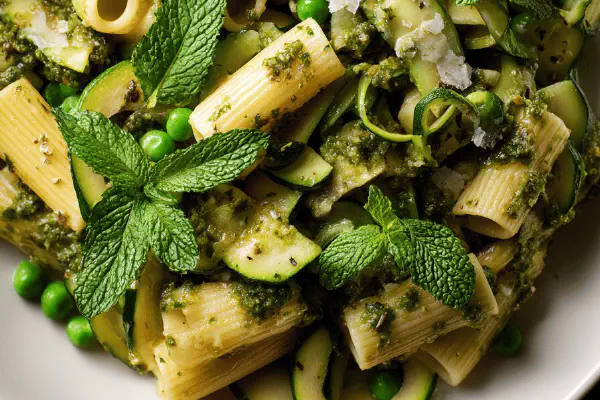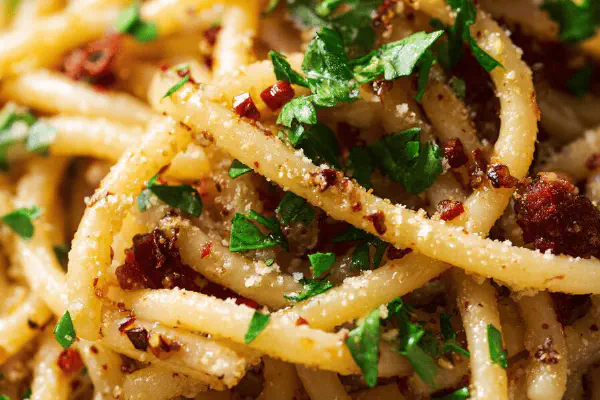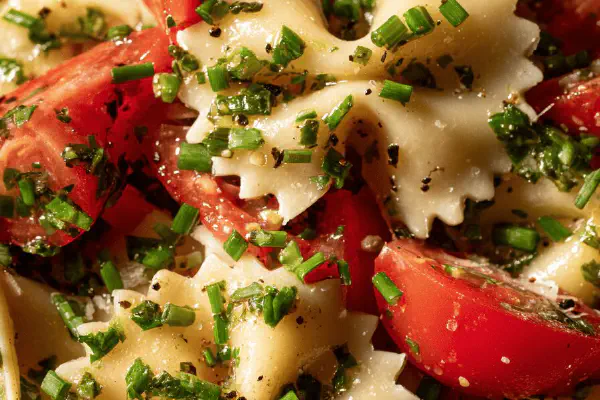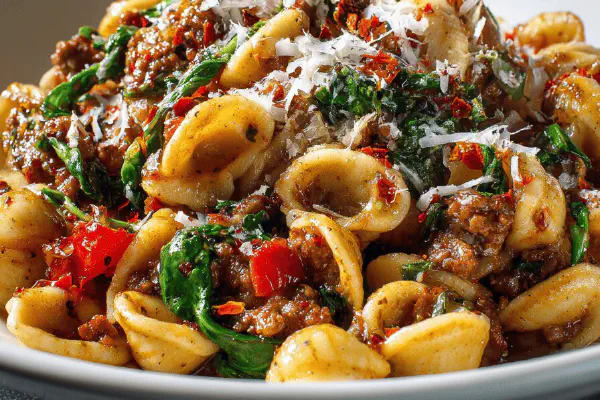Tubettini with Peas and Ricotta Twist

By Emma
Certified Culinary Professional
Ingredients
- 4 cloves garlic chopped fine
- 40 ml olive oil (about 2 1/2 tbsp)
- 1 small zucchini grated
- 50 ml dry white wine
- 1 liter low-sodium vegetable broth
- 300 g tubettini or other short pasta
- 400 g frozen peas thawed
- 30 g freshly grated pecorino romano
- 300 g ricotta cheese
- 50 ml basil pesto
- 15 g fresh mint leaves torn
- Optional swap 1: replace zucchini with finely diced asparagus
- Optional swap 2: replace pecorino romano with aged Parmesan
About the ingredients
Method
- Heat oil medium-high in a saucepan; swirl garlic in until fragrant but not browned, about 1 minute. You want soft sizzle, no burnt bits. Toss in grated zucchini or asparagus instead; cook 3 mins stirring constantly till veggies soften but still vibrant. Scent of garlic and fresh veg mingles now.
- Pour in wine; it bubbles fast, scrapes paste from pan bottom. Wait for wine to reduce about half, 2 to 3 minutes—watch carefully. No rushing here or wine harshness remains. Immediately add broth and pasta. Salt lightly but bring broth flavor forward. Pepper to taste.
- Bring to vigorous boil, then reduce to medium-low heat. Stir often to prevent sticking. Cook 7 to 9 minutes until pasta just a bite away from done. This is al dente, tender with chew. Broth should thicken, coat pasta almost creamy but no cream added.
- Add peas last 3 minutes—no longer or they lose snap and bright green hue. Once peas turn vibrant and pasta bites back with chew, remove from heat. Taste broth; adjust salt before cheese folds in.
- Stir pecorino romano into pasta mixture swiftly, melting sharp salty notes. Pecorino crucial here for depth. Divide pasta into bowls while still steaming. Spoon ricotta chunks over top; they soften but not melt completely, creamy cool contrast.
- Drizzle pesto in small dollops on ricotta, scatter torn mint leaves over everything. The herb aroma pops now—arresting after warm cheese and broth. Serve immediately, watch ricotta melt slowly into hot pasta when eating.
- If no tubettini on hand, use ditalini or small shells. No vegetable broth or want richer flavor? Chicken broth works but reduce salt earlier. If no pesto, quick blend basil and olive oil with a little lemon zest as fresh substitute.
- Common snag: pasta sticking and broth drying out. Keep heat balanced—low enough to simmer but not rapid boil. Stir often, watch liquid. Broth reduction develops flavor and texture; no need for extra fats.
- Ricotta on top is deliberate, not stirred in fully. Keeps texture contrast. For dairy-free, discard ricotta and substitute with toasted pine nuts or creamy avocado puree freshened with lemon juice.
Cooking tips
Chef's notes
- 💡 Garlic chopped fine and cooked gently in olive oil—watch closely no browning or flavor turns bitter. Toss zucchini ribbons or asparagus early; stir often till softened but still bright. The key is gentle sizzle aroma not scorch.
- 💡 Pour white wine only when garlic and veggies are soft, wait for it to shrink visibly— bubbles taper, almost half gone. If rushed, harshness stays. Then add broth and pasta. Salt lightly since pecorino adds punch later.
- 💡 Simmer broth medium-low to let starch release gradually. Stir frequently but don’t overdo or sauce won’t thicken. The sound changes—soft bubbling not rolling boil. Pasta will coat thick broth, creamy appearance without cream.
- 💡 Add peas last few minutes, exactly 3 to keep snap and green hue intact. Avoid overcooking or dull color and texture vanish. Peas should pop with freshness when bitten, contrast soft pasta and sauce.
- 💡 Ricotta spooned on top cools mouth and contrasts warm pasta. Don’t stir in fully so texture stays. Pecorino stirs in off heat melting sharp saltiness. Mint torn leaves scattered last preserve fresh aroma without wilting.
Common questions
Can I swap tubettini for other pasta?
Yes, use ditalini small shells work. Adjust cooking times as thickness varies. Watch texture closely to avoid mush. Testing bite key every minute helps.
What about no vegetable broth?
Chicken broth stand-in but reduce salt earlier in cooking. Stock variations change flavor intensity. If none, water with more seasoning but lacks depth. Keep tasting to balance.
How to fix pasta sticking?
Stir soon after adding pasta. Medium-low heat simmer is crucial to reduce rapid boiling. If stuck, scrape gently pan bottom. Older pasta or starchier sorts need more attention. More liquid if drying out.
Can leftovers keep fresh?
Store cooled covered fridge up to 2 days. Ricotta toppings soften—reheat gently or add fresh dollops after warming. Sauce thickens fridge cold, loosen with small splash broth or water when reheating.



